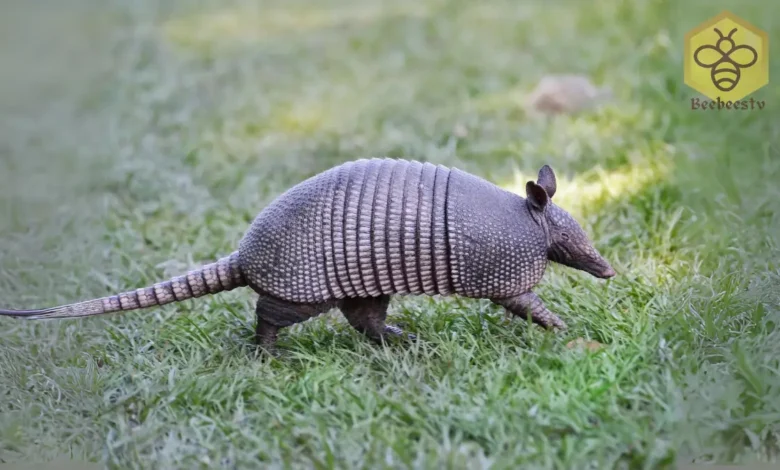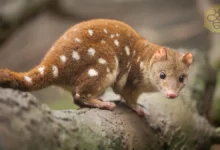Armadillos: Nature’s Armored Architects of the Wild

Armadillo: Nature’s Armored Marvels
Armadillo
Introduction
The armadillo is a truly unique creature that has captured the attention of scientists, wildlife enthusiasts, and curious minds alike. Known for its protective armor, this fascinating mammal is native to the Americas and is famous for its burrowing lifestyle. Armadillos play an essential role in ecosystems by controlling insect populations and altering the landscape with their digging behavior.
Scientific Name
The armadillo’s scientific name is Dasypodidae, which refers to the family that encompasses all species of armadillos.
Common Name
The common name for these armored creatures is “armadillo,” derived from the Spanish word meaning “little armored one.” This name reflects their most distinct physical characteristic—the tough, bony plates that cover their bodies.
Scientific Classification
| Kingdom | Animalia |
| Phylum | Chordata |
| Class | Mammalia |
| Order | Cingulata |
| Family | Dasypodidae |
| Genus | Multiple genera including Dasypus, Tolypeutes, Chlamyphorus, among others |
| Species | Over 20 species |
Types of Armadillos
There are over 20 species of armadillos, but the most well-known and widespread species include:
- Nine-banded Armadillo (Dasypus novemcinctus): The most common species, found in the United States and South America.
- Three-banded Armadillo (Tolypeutes matacus): Known for its ability to roll into a perfect ball when threatened.
- Pink Fairy Armadillo (Chlamyphorus truncatus): The smallest species, found in Argentina, with a soft pinkish armor.
- Giant Armadillo (Priodontes maximus): The largest species, found in the rainforests of South America.
Habitat
Armadillos thrive in a variety of habitats, including grasslands, forests, deserts, and savannas. They prefer environments with soft soil that is easy to dig, as burrowing is a crucial part of their lifestyle. The nine-banded armadillo, for example, is particularly adaptable and can be found in both dry scrublands and moist forests. In the United States, armadillos have expanded their range into the southeastern regions, such as Texas, Florida, and Louisiana. In South America, they inhabit a range of ecosystems, from the tropical Amazon rainforest to the arid regions of the Pampas.
Physical Characteristics
Armadillos are known for their distinctive body armor, which is made of bony plates called osteoderms. This armor covers their back, head, legs, and tail, protecting them from predators. Despite their tough exterior, armadillos have a soft underbelly, which they protect by curling into a ball (as seen in the three-banded armadillo) or retreating into their burrows.
- Size: Armadillos range in size from the small pink fairy armadillo, which is about 5–6 inches long, to the giant armadillo, which can grow up to 59 inches long and weigh up to 110 pounds.
- Color: Most armadillos are gray or brown, though some, like the pink fairy armadillo, have lighter or pinkish hues.
- Claws: Armadillos have strong, sharp claws that they use for digging burrows and foraging for food.
Diet
Armadillos are omnivores, but their diet is largely insectivorous. They primarily feed on ants, termites, and other small invertebrates that they dig up from the ground. Their long, sticky tongues help them capture insects quickly. Armadillos are also known to eat fruits, small amphibians, and carrion when available.
- Primary diet: Insects, termites, ants
- Occasional diet: Small vertebrates, eggs, fruits, and fungi
Predators and Threats
Armadillos face several natural predators, including large carnivores such as coyotes, foxes, wolves, jaguars, and pumas. Birds of prey, like eagles and hawks, may also target young or small armadillos. Despite their protective armor, they can be vulnerable when exposed or outside their burrows.
In addition to natural predators, armadillos face threats from human activities. Habitat destruction, road collisions, and hunting (for meat and sport) are significant threats. The nine-banded armadillo, for instance, is often hit by vehicles as it crosses roads, making roadkill a common issue in areas where they coexist with humans.

Reproduction, Babies, and Lifespan
Armadillos have a unique reproductive strategy. Female armadillos give birth to litters of identical quadruplets, a rare phenomenon in the animal kingdom. After a gestation period of around four months, the babies, called pups, are born with soft skin that hardens over time into the protective armor typical of adults. The pups stay with their mother for several months before becoming independent.
- Lifespan: Armadillos in the wild generally live for 7–10 years, though some may live up to 15 years in captivity.
- Reproduction: Litters of four identical pups are typical for many species, especially the nine-banded armadillo.
Population
The population status of armadillos varies by species. The nine-banded armadillo, for example, is widespread and abundant, with a population that is growing in parts of the United States. Other species, such as the giant armadillo and pink fairy armadillo, are more vulnerable due to habitat loss, hunting, and other human activities. Some species are listed as near-threatened or vulnerable by conservation organizations like the IUCN.
Behavior and Lifestyle
Armadillos are solitary animals, primarily nocturnal or crepuscular, meaning they are most active during dawn and dusk. They spend much of their time digging burrows, foraging for food, or resting. Each armadillo has its territory, marked by multiple burrows, which they use for sleeping and escaping from predators. Burrows are also used for raising their young.
- Burrowing: Armadillos are expert diggers, creating complex burrow systems that can be up to 15 feet long.
- Territorial: They are solitary and mark their territory with multiple burrows.
Ecological Role
Armadillos play a vital role in ecosystems, particularly as insectivores. By feeding on insects, especially ants and termites, they help control pest populations. Their burrowing behavior also impacts the environment by aerating the soil, which can improve plant growth and water penetration. However, their digging can also cause conflicts with humans, especially in agricultural areas where their burrows may damage crops or infrastructure.
FAQs
- What do armadillos eat?
- They primarily eat insects like ants and termites, but they also consume fruits, small amphibians, and carrion.
- How do armadillos protect themselves from predators?
- They rely on their tough, bony armor to protect themselves. Some species, like the three-banded armadillo, can roll into a ball to shield their soft underbelly.
- Can armadillos swim?
- Yes, they are surprisingly good swimmers. They can hold their breath for extended periods and use their buoyant armor to float across water bodies.
- What is the lifespan of an armadillo?
- They typically live for 7–10 years in the wild, though they can live longer in captivity, sometimes up to 15 years.
Conclusion
Armadillos are fascinating, armored mammals with unique adaptations that allow them to thrive in various environments. From their specialized digging abilities to their insect-based diet, they play a crucial role in maintaining ecological balance. While some species remain abundant, others face challenges from habitat loss and human interactions. Protecting armadillo habitats and understanding their behavior is essential for preserving these remarkable creatures and the ecosystems they inhabit.


